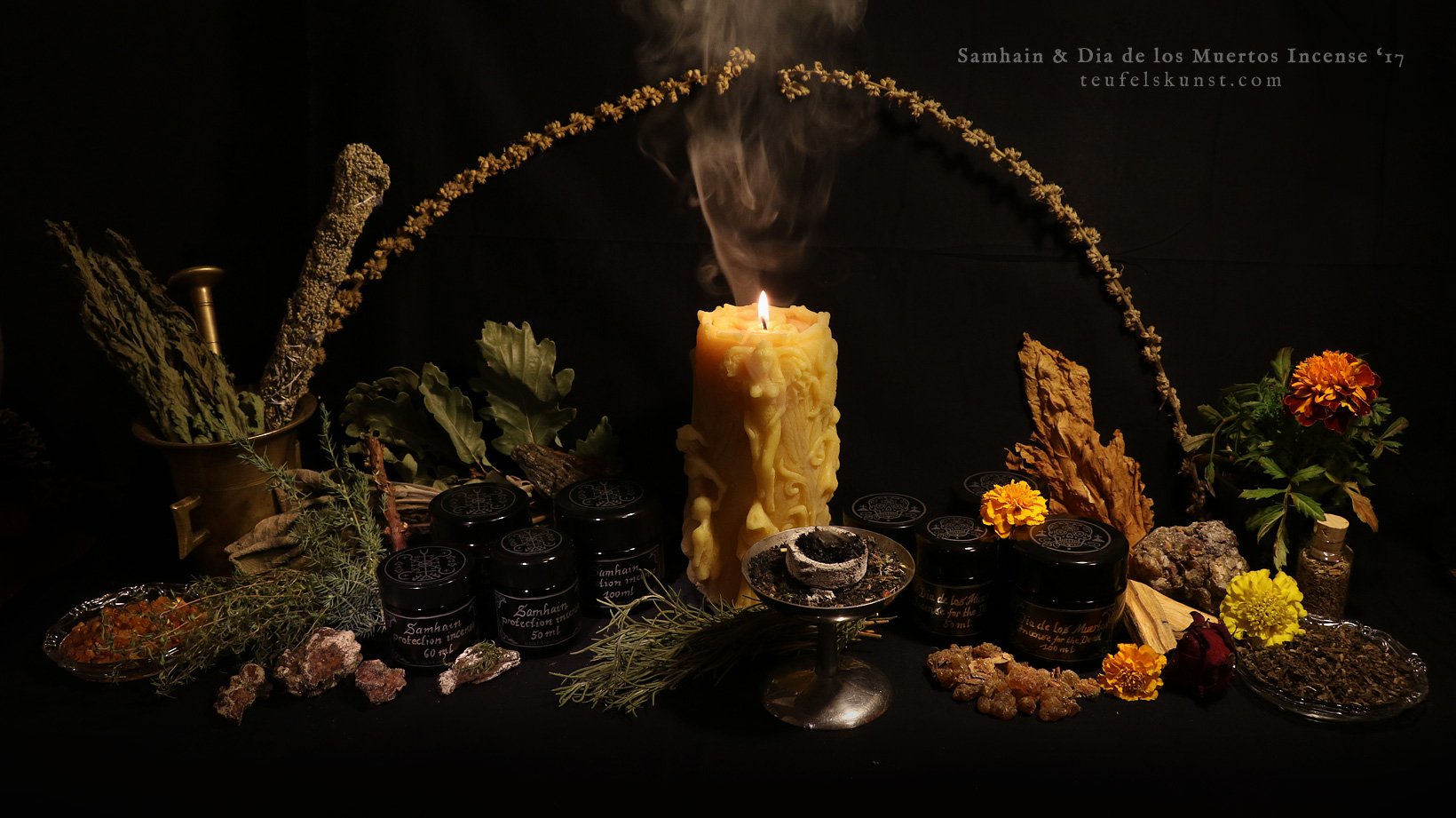
With the arrival of autumn and in view of the last warm weekend for this year, I am delighted to share some seasonal musings and the most recent shop news with you.
As I am typing, my hands smell of fragrant cempasuchil flower… the day before though they were still sticky from the self gathered pine resin. Both are ingredients in incense blends individually dedicated to the season’s various feast days.
“End of Summer”
Samhain means “end of summer”. The Gaelic festival marked the end of the harvest season and the beginning of winter. Today it is celebrated on the night between October 31st – November 1st. It is also associated with St. Martin’s day, November 11th. Some also connect it with the midpoint between the autumn equinox and the winter solstice (or the nearest full moon), when the ecliptic longitude of the Sun reaches 225 degrees.
Samain is also the name of the Celtic god of death, who from this point on ruled over the land, while the goddess of vegetation was forced to decent into darkness until the coming spring. Her parting is accompanied by the honk of the geese leaving for the South. Any herb harvested after this point would be considered harmful, save for the grey mugwort. During Samhain the doors to the spirit-/ underworld opened, and the spirits that would enter, were not always friendly. In some tales, spirits of darkness and chaos (such as the Irish Fomorians and the Crom Cruach) would be given human sacrifices.
Rural people’s survival depended on the harvest. The fear of loosing the harvest, fierce autumn storms, the long nights etc. was real. It was essential to secure the harvest and protect the home, barn and family. It was custom to cleanse and protect the home by burning herbs. Herbs associated with protection and healing, as well as the opening of the gates to the spirit world, are hence part of my Samhain incense.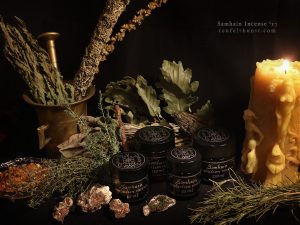
From the need to protect oneself may also have sprung the latter-day custom of placing candles in hollowed out objects. Readily available were turnips or pumpkins, then turned into figurative lanterns sporting demonic grimaces. Similar to the scarecrow, the lantern was to ward of the ‘evil’ and at the same time its flame lit up the long nights. This “light in the dark” is embodied by the amber, fossilized tree resin. Amber is called Bernstein in German, from Low German börnen, meaning “to burn”. The Greeks knew it as ḗlektron, from ēléktōr, meaning “shining sun”.
Samhain also marks the time when deciduous trees have shed most of their leaves. The leaves fall to the ground, decay and nurture the cycle of life. The wood keeps men warm, the bark heals. The evergreen conifers deliver in addition aromatic resins with cleansing and healing properties. An important part in this incense is thus the rosy red resin gathered from pine trees in my area, as well as fragrant juniper wood and needles from my own garden.
When burnt, the blend develops a strong white smoke and is best used outdoors or in a well ventilated area. If used indoors, air the room and then enjoy the scent, which will last for days.
Contains: amber, juniper needles and bark, mugwort, oak bark, pine and fir resin, rosemary, sage, thyme, vervain
Use: Use this incense blend for cleansing, healing, protection and communication with the spirits. Its fragrant ingredients evoke in particular the spirits of the wild/ sylvan realm and may aid in re-connecting with the spiritual world of the forests and wilderness. It can also be used on the “Totensonntag“, for contacting one’s ancestors and for protection from “Wiedergänger” (revenants).
“Day of the Dead”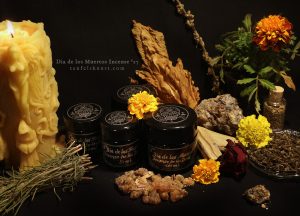
The pagan festivities surrounding Samhain have been substituted by Christian feast days throughout a large part of the Western world. Folkloric customs are a part of marketing schemes. From the pagan Samhain to the Christian All Saints day, the modern world celebrates “Halloween” with plastic skulls, led pumpkins and dressing up as corpses. Everyone can be a zombie for one day and night and feel more alive than the rest of the year. Halloween gives a good example for cultural appropriation gone wild, every year a little more. But I blame none. Because it is part of human nature, both to adopt other traditions as well as to defend one’s own culture and rituals.
One of these traditions that have been sinking into the Western world and heavily influence our aesthetics, is the Mexican Dia de los Muertos. As the festival in Mexico grows bigger and becomes more impressive every year, so grows the fascination with it outside of Mexico. Just like the cult of Santissima Muerte grows in numbers both in and outside Mexico. Death worship is real and prospering. It is nothing extraordinary.
All over the world people venerate their ancestors and spirits of death, with altars at home, at their graves or in temples or chapels dedicated to them. And often there are special festivals dedicated to the veneration of the dead. In some countries these celebrations fall in the months of July and August, such as the Japanese Obon or the Argentinian feast for San la Muerte. In other countries they center around the days and nights spanning from All Hallow’s Eve (October 31st) to All Saints (November 1st) and All Souls Day (November 2nd).
A funny exception is Germany, where it is custom to visit and adorn the graves of family members on the Totensonntag (the “Sunday of the Dead”). It falls on the last Sunday before the first Advent (usually at end of November) and, though of Protestant origin, is a protected holiday in all of Germany. And death is no funny affair in Germany, as the day is meant to be spent in silence, e.g. it is forbidden to dance or play loud music in public.
So, for me “Halloween” is not the time to commemorate my ancestors. But it is still a special time of the year, during which I am free to explore and find light in other traditions.
In Mexico the celebration starts on All Hallow’s Eve, when children make altars for the angelitos (the souls of dead children). November 1st is referred to as Día de los Inocentes (“Day of the Innocents”) or Día de los Angelitos (“Day of the Little Angels”), which is when the souls of dead children are honored. On November 2nd, the actual Dia de los Muertos, the graves of dead family members are visited. The graves are adorned with cempasuchil flowers, the flowers of the dead. Between the orange sea of flowers, candles are lit and Muertos (the bread of the dead) and sugar skulls are placed as offerings, along with favorite food, beverages, photos etc. The dead are greeted and welcomed back to the world of the living for one day and night. Dancing and intoxication are welcome and encouraged.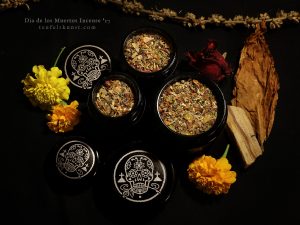
This way of approaching the dead is very different from the official German custom. Since a few years I have joined in the tradition of baking bread of the dead and incorporating some of the Mexican elements in my own worship practice. I can tell it kept me busy! This year I am forced to cut down a bit. I hence created this incense blend for the day of the dead, with favorite ingredients and my own Calavera design.
This incense blend is foremost dedicated to the Mexican tradition of venerating the ancestors, but may also work in the contexts of European ancestor veneration, as it simply pleases and honors the beloved dead. Alternative incense blends for these occasions can be found in my shop.
Contains: cempasuchil (marigold) flower petals, dark copal, myrrh, palo santo wood, patchouli, red rose, rosemary, tobacco, yauthli, yerba santa
Use: celebrating the day(s) of the dead and honoring the beloved dead
October 14, 2017
Posted In: News & Site Updates, Incense, Feast Days
Tags: samhain, samain, samuin, ritual incense, cempasuchil, samhain 2017, dia de los muertos, day of the dead, all saints, all hallows eve, all souls, incense, feast days
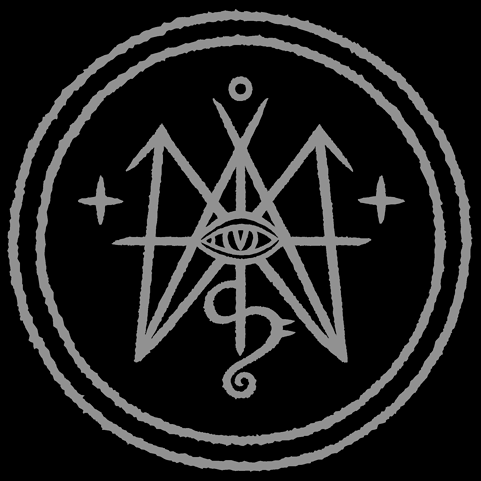
Leave a Reply